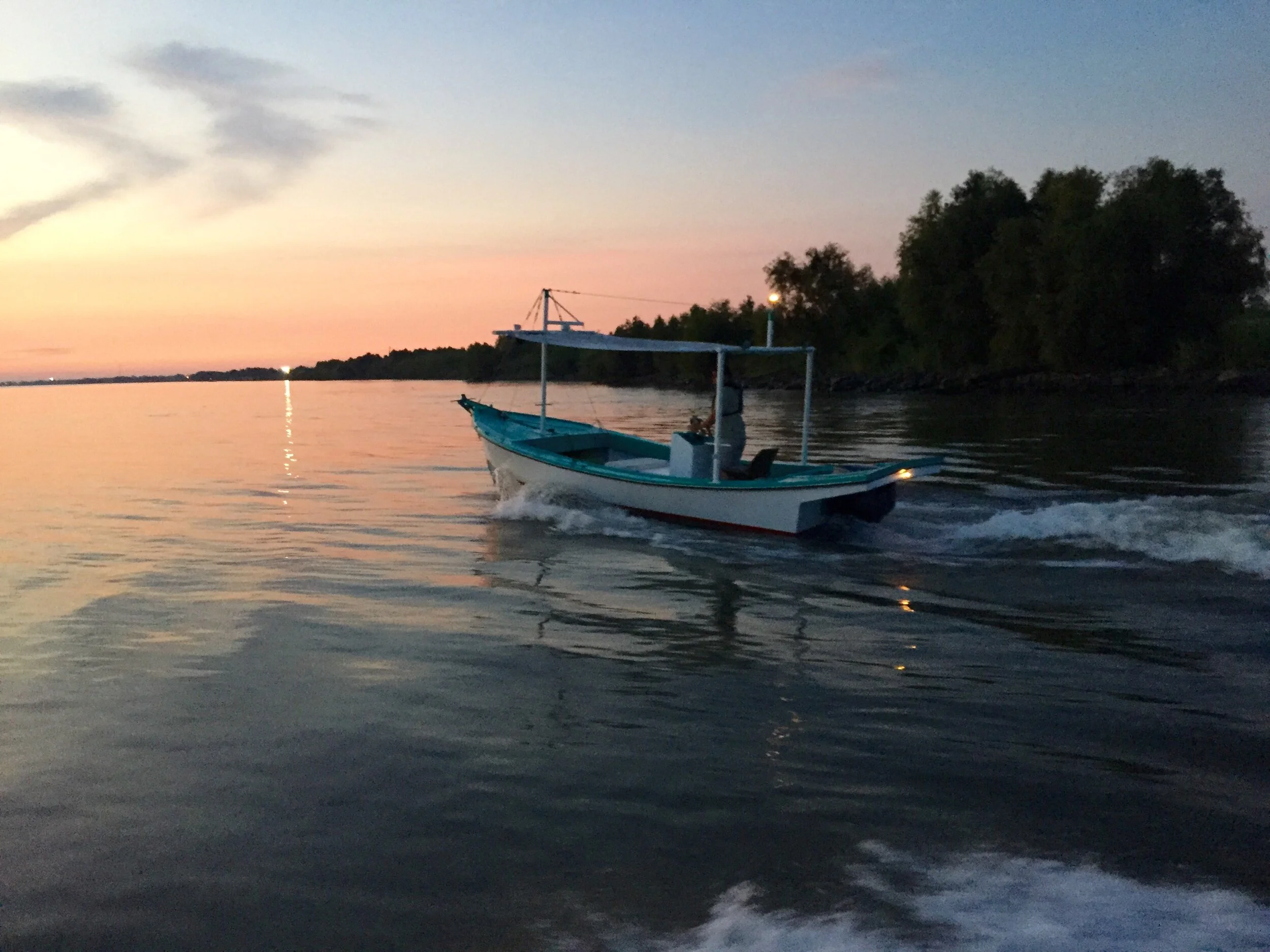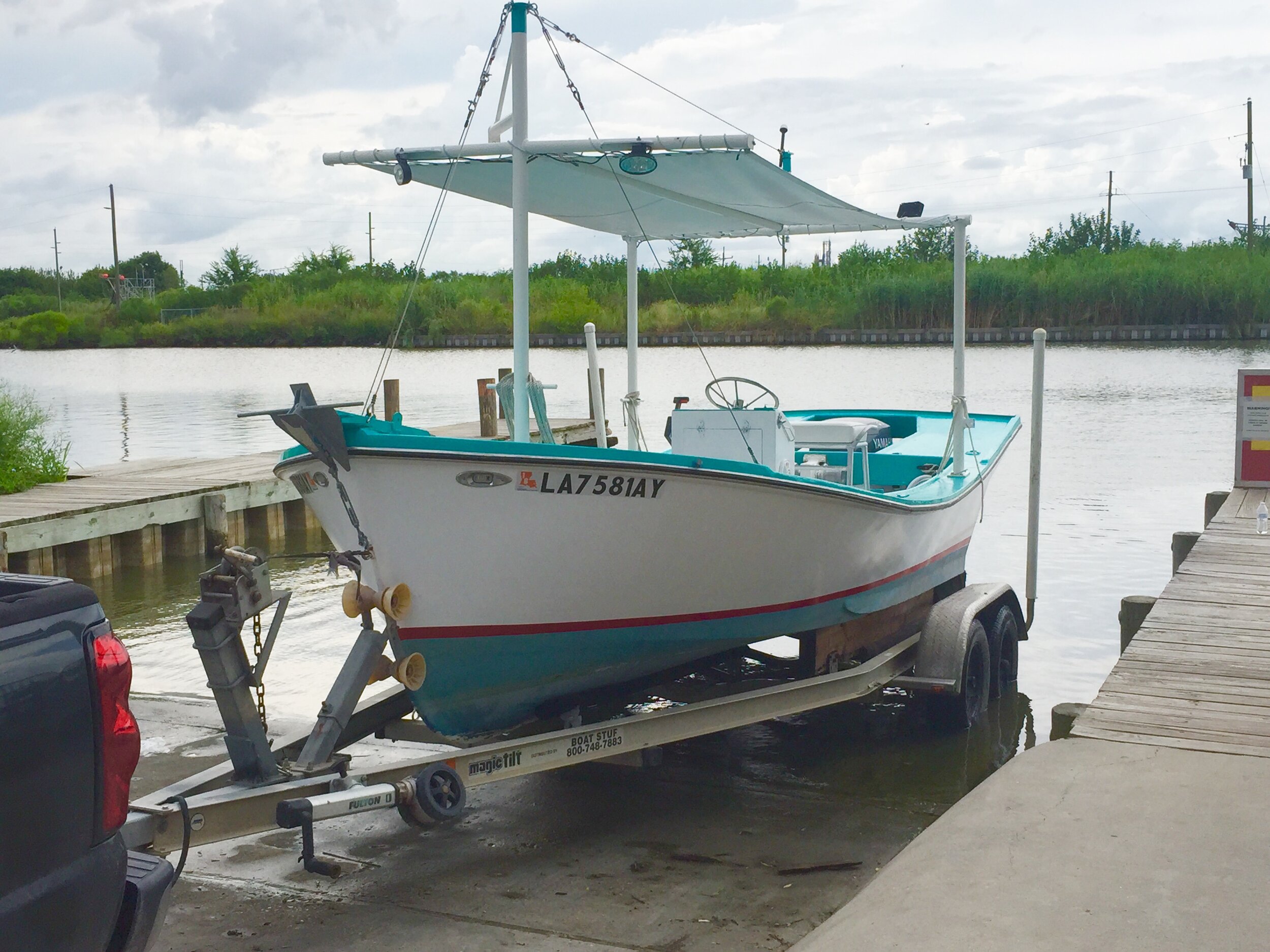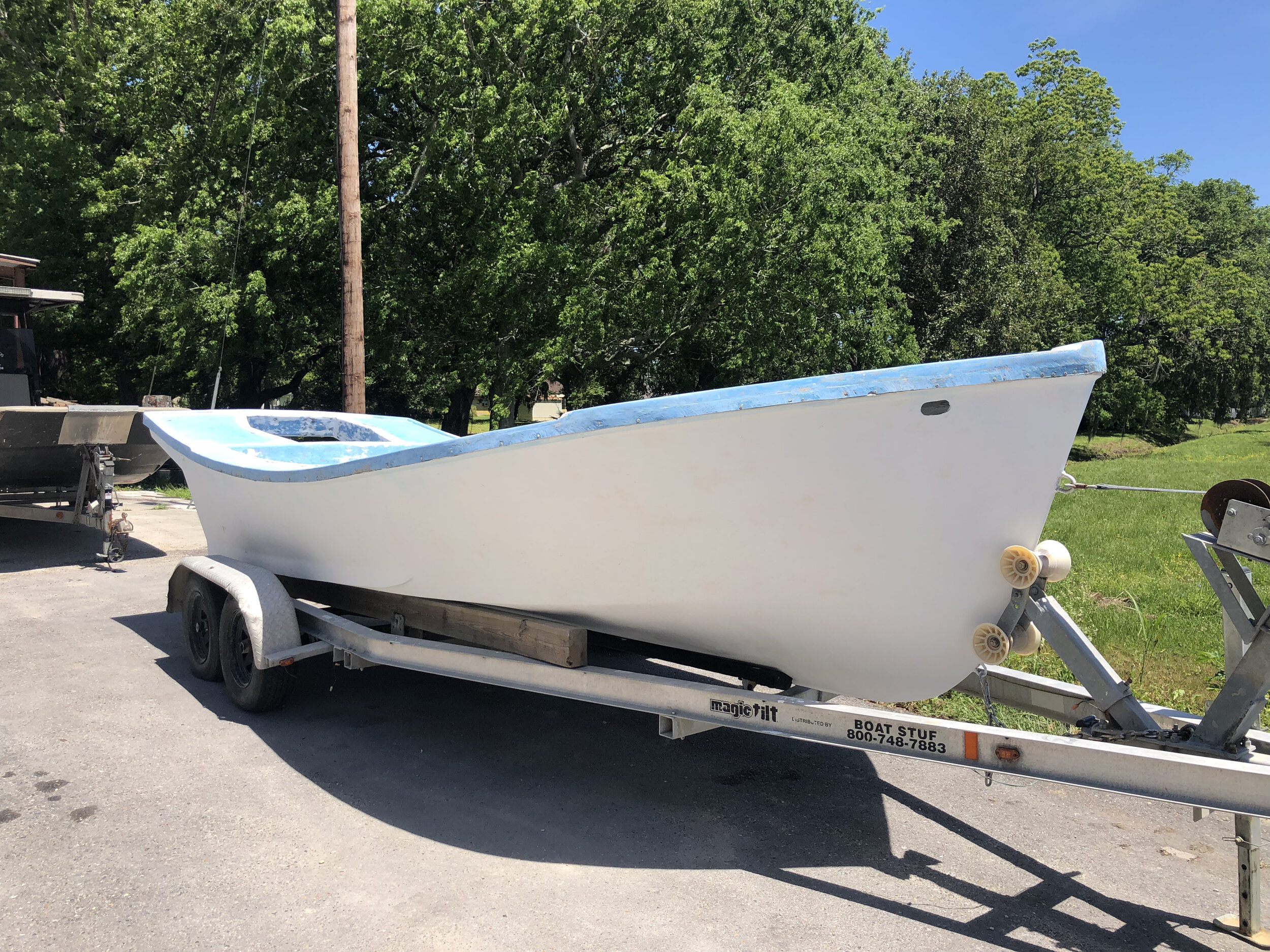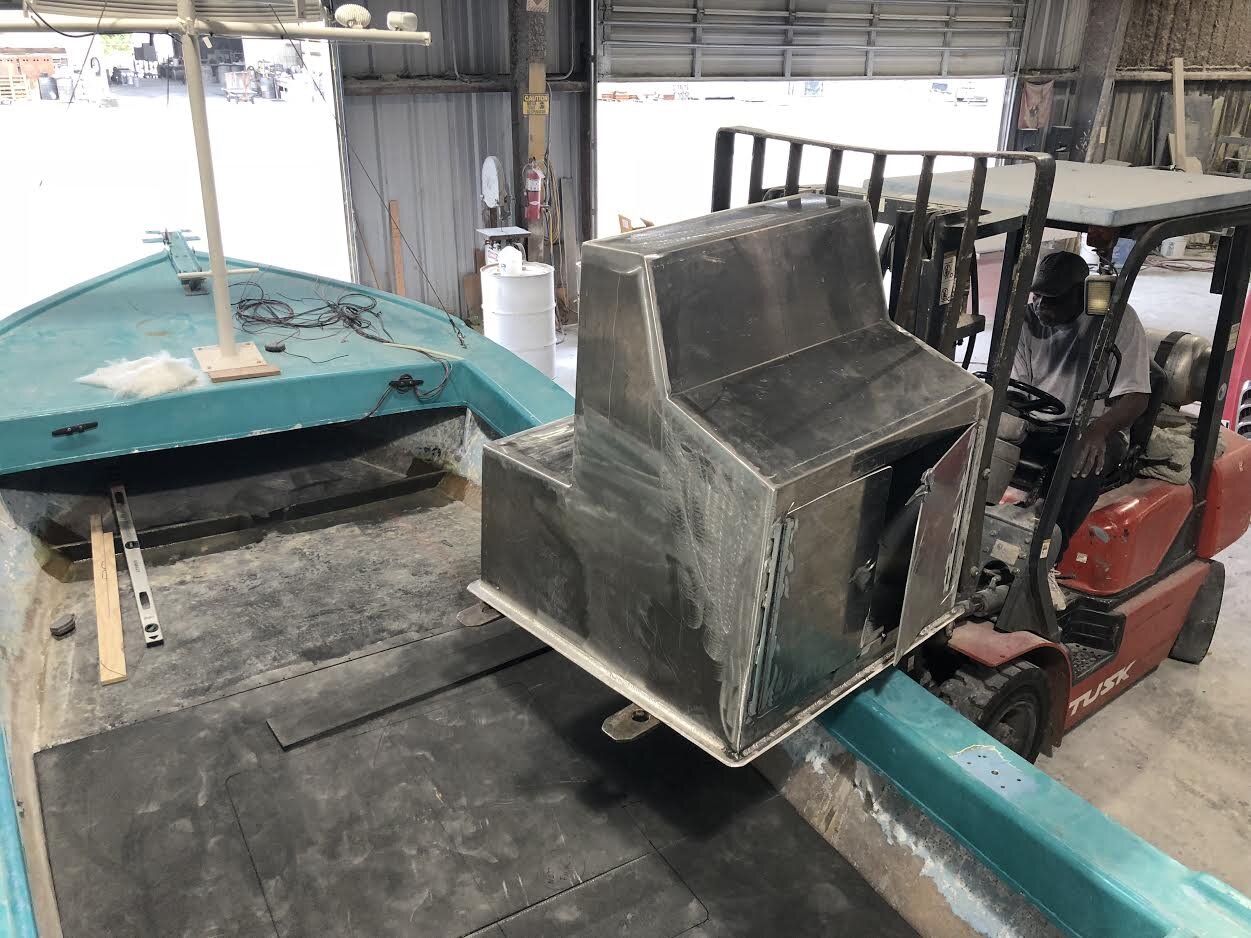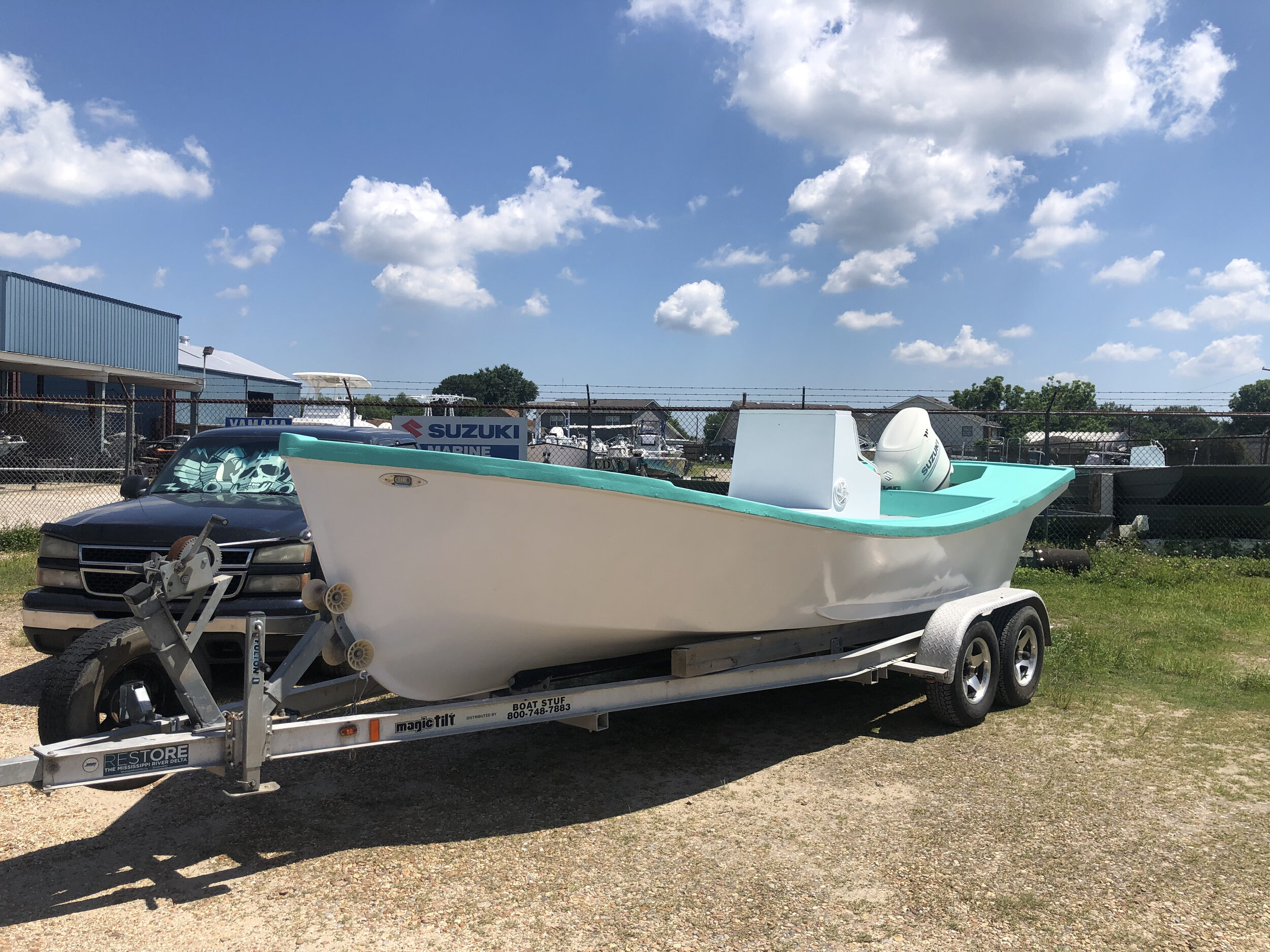It was a labor of love to turn this old shrimp boat into the ultimate eco tour vehicle.
Louisiana has a long tradition of building tough boats tailor made for the local conditions. So when Delta Discovery Tours was getting started I knew a traditional Louisiana boat was the only thing that could do the job well while giving folks an authentic experience. The areas where I operate have individual nuances that require it. Some places are ten inches deep, other spots have six foot high wakes from container ships. A vessel that is capable in a multitude of environments and safely gets six passengers around the coast -from cypress swamps to barrier islands was a must. This is the story of how I found and modified the perfect boat for the job.
Back in 2010 when I started picking up trips via word of mouth I was using a mud boat nicknamed Trenasse, the Cajun French word for a small cut in the marsh. It’s a great boat for exploring the swamps, but I needed to extend my operating area and get folks around quicker. After considering a dozen types, and looking at hundreds of individual boats, the search was narrowed to an old school Lafitte Skiff.
THE PERFECT BOAT
The Lafitte skiff I found had a lot of potential. It was built by Jefferson Fiberglass in Harvey, Louisiana in 1983. The boat was rigged for shrimping in Mississippi and came complete with 36 foot trawl with turtle excluders, double cathead winch, picking boxes, and stout rigging. After some negotiation and a handshake warranty with the policeman owner, I headed back to the coast. One of the things on my list was a full length canvas. This boat had great rigging and a canvas to stay cool on hot days.
The first splash with a boat is always a tense moment. The old two-stroke engine had a lot of power and had the boat planing in no time. The boat would run nearly forty miles an hour.
Rigged for Trawling
I made the boat ready for ecotours in the delta by removing nearly 300 pounds of shrimping gear and adding comfy seats. The boat went right into service and increased the operating area for Delta Discovery Tours significantly. Now barrier islands and the river’s end were in reach.
The old engine, while it was smokey and loud, was a reliable as the day is long, and simple to service. Even on cold days it would fire right up, a testament to running it three times weekly and Yamaha’s solid workmanship & design.
Over the miles and trips folks would ask why the boat wasn’t named. One day, while giving a presentation before a trip I was sharing the positive news about new lands emerging from bays nearby. When I uttered the words “new delta” I stopped in my tracks. Boat names have captivated me since I was a boy. The perfect name is elusive to so many boat owners. In an area with so much land loss, the hope and freshness coupled with the operating area in the Mississippi River Delta made New Delta the perfect name for this boat. I ordered lettering soon after.
New Delta in the Bohemia Spillway.
DECISION TIME
A pinhole in the 35 year old fuel tank was starting to make bilge smelly. The console, a plywood and fiberglass concoction was showing age. I had a potential buyer for the old engine so it was time to make a decision.
New Delta as we ran her before the refit. Based on time proven designs, she is the perfect boat for exploring the delta.
At some point in the past the boat had a deck overlay with new fiberglass. The wood underneath was getting rotten. When adding seats the drill bit came out of the deck looking like it had mud on it. Cutting a hole in a perfectly good boat is never an easy decision and always leads to project creep. Folks ant to get on a safe and comfortable boat. I held started pulling the boat down to the bare hull.
At the end of the day I’m glad I made the decision. I found some issues with the keelsons, the longitudinal runners that give the hull support. Thirty-five years of service took their toll on the wood. I stripped the boat completely to get it ready for the next thirty-five years of service. Lingering issues with the console and fuel tank could all be repaired during the refit.
Thankfully, I had a spare boat to keep rolling with tours. That was key to keeping the service going.
New Delta at Hydroflat prior to new gel coat.
Project creep is a real thing and hard to avoid on a project like this. With the new composite keelsons and deck going in, the boat was going to need a new gelcoat job to seal in the fiberglass work. I wasn’t looking to build a paint booth and the gnats and mosquitos would have cut into the quality of the paint job, so I selected Hydroflat in Des Allemands. They did a great job and had the job done in a week.
Like any other project this one was several smaller projects wrapped into one. Scheduling concurrent work was tough. The above photo shows the lengths I’d need to go to make sure things were being built to the correct size.
CONSOLE
I was able to save some time by having the console built with the fuel tank in one piece. The aluminum fuel tank had been under the deck for three and a half decades so it didn’t make sense to put it back. Instead it was blended into the new console, a common feature on the more modern work boats in the delta. The new tank can hold nearly sixty gallons. Now with a more fuel efficient four stroke engine the range and operating area has increased by a good bit opening up new islands and multi day trips into the delta.
I was trying to keep costs down so I prepped and painted the console at home. This was the first time I ever painted with compressed air. It took more than a few coats with sanding in between. I was surprised at how nice the paint came out. South Louisiana’s humidity made getting started a longer process for a first timer. Once the moisture issues were resolved the paint went on well. I used two part polyurethane primer and paint.
The console wiring was a relaxing process. It made sense to leave extra circuits for add-ons that would undoubtedly come later. Foreseeing a lot of time spent on the wiring job, the first order of business was adding a LED floodlight in the console. That helped a bunch for the really intricate work. The VHF radio was hidden away from the sun and spray inside the console doors. I tried to plan ahead and avoid drilling any unnecessary holes in the console to avoid corrosion. The fuse panels are mounted on marine lumber attached to 90-degree one inch aluminum angle iron welded to the inside. Ultimately, the batteries ended up in the bow to help balance the boat. All of the wiring is with dielectric grease and heat shrink.
Console wiring in progress.
Mirroring larger ship construction in modules, when the new console was installed in the boat all I had to do was run wire and fuel line. The batteries, panel, and helm were already in place. This saved countless trips climbing over the side of the boat to the workshop. When the console was mostly complete and the boat came back from getting gelcoat I married the two.
Engine and console married
Before the refit guests would remark at the simplicity of New Delta. I wanted to keep that clean and simple look while upgrading the boat to fit 21st century needs. The controls were spartan and there was no GPS. Only a small switch panel and tachometer were near the wheel. The new console keeps with that old vibe while giving me the 21st century tools of radar, gps, and a depth finder to do these trips as safely as possible.
ENGINE
After considering a number of factors including reliability, efficiency, and what trusted folks nearby were saying I decided to repower with a Suzuki 140. The class of engines Suzuki builds between 90-140HP weigh just about the same and the cost to get more power was negligible. The engine burns around 3.5-4.5 gallons per hour at cruise and no more the 10GPH at wide open throttle. The old two stroke was more than double that.
After seeing Suzuki outboards prevalent on smaller oyster boats I asked an oyster fisherman why he chose to use the motor. He told me “that engine will pump peanut butter through the water pump.” Those fishermen circle constantly in muddy water dredging oysters.
Here in the delta, it’s not if you’ll run aground, but when. Shallow water is the norm and sometimes the river shifts sandbars and fills in old canals and bayous. Having an engine that can handle the tough conditions was a must. Still, after a year in service the water pump has been intact so no complaints.
The Suzuki was less expensive than the Yamaha of comparable size too. Suzuki’s engineers chose to use a large gear reduction on their engines. This allows for a bigger diameter propeller. The ecotour mission needs power and not speed, this gear ratio and bigger propeller get the boat on plane easily and make a good fit.
Duvic’s Outboards in Harvey installed the engine. They did a top notch job and had me out the door quickly.
After Outboard installation at Duvic’s
COMING TOGETHER
Hindsight is always 20/20. I wish I had the rigging rebuilt before the gelcoat was complete. I was intending to use the old rigging but ended up upgrading. B&T Welding did the construction. I designed lines with nod to the past while taking care of more modern needs like a sturdy platform for the radome and canvas. Many old lugger boats had a square tapered mast like the one pictured below. The robust mast let me skip the cable rigging to open up more space for photographers.
Some uncertainties about what radar I was going to choose led me to skip adding the bracket during construction. I didn’t know if I was going to buy a radar this year, or five years down the line so I skipped it only to add one a few months later.
New Zealand built winch is really helpful for soft groundings.
One of the nice-to-haves was a winch, its great for soft groundings on a cold day. I wanted the winch to have a sturdy foundation so I had a half inch plate added to the mast base.
The refit was absolutely a labor of love. New Delta is more capable than ever. I’d feel comfortable taking the boat anywhere along the bottom third of Louisiana. Lots of folks stop me at boat launches to talk about the boat. Everyone in coastal Louisiana seems to have a story they want to share about a Lafitte Skiff. So many folks had one as a family boat here in South Louisiana with weekends spent at the camp, trawling, or headed to the beach.
I tried my best to create a much safer and environmentally friendly boat for giving ecotours and swamp tours near New Orleans into the Mississippi River Delta. With increased range I’m better able to serve our specialty guests on longer trips. The ability to see through fog and darkness gives me more confidence while navigating the river.
In the future I would like to add a bracket for the ice chest with a seat, otherwise New Delta is finished up.
I was able to build a completely custom ecotour vehicle, perfectly crafted to give you comfort while stretching the realm of possibilities for tours in the Mississippi River Delta.
The internet has brought creatives together in a hive-mind where ideas are flowing freely. You don’t have to think of every little clever upgrade yourself, but you can build on those forged by others to get a springboard, making technological leaps quicker and across larger geographies than by just word of mouth. In a way, we have more communication tools than the old school Louisiana boat builders. We can share ideas across the planet in moments. I hope this build will inspire other folks to take something old and make it cutting-edge again. This is why I want to share the story of how I turned this little shrimp boat into the ultimate eco tour vehicle.
-Richie


